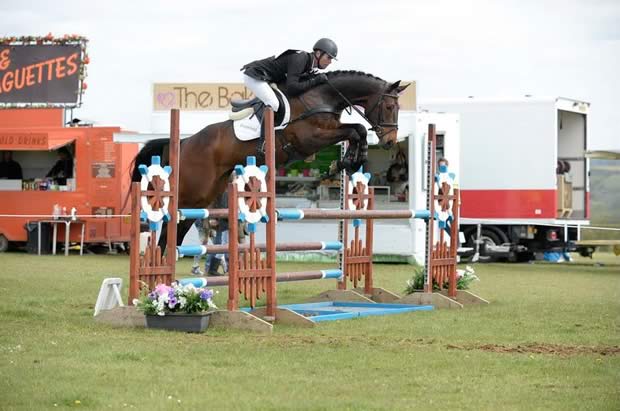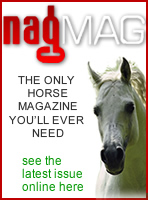
Horseytalk.net Special Interview
Kevin McNab
Five Top Show Jumping Tips
International event rider Kevin McNab provides 5 top tips to improve your show jumping performance this season.

1. Position.
Your position and weight distribution are very influential when jumping. Especially if you are riding a more sensitive horse with a naturally quick motor.
Your position has to stay in balance at all times. Your heals and lower leg are like your seat belts. If they aren't on there is not much keeping you in the saddle.
The ability to move between sitting down and a light seat, without losing your balance or altering the canter, is good practise and will show up any weaknesses you have here.
Your hands need to following your horse's mouth over a fence. It's important not to get left behind and get stuck catching your horse in the mouth mid air. You want to create a nice experience for your horse when jumping. A balanced position and soft hands are a good start.
2. Rhythm and Balance.
Your ability to establish and maintain a rhythm with a balanced canter is very important. You then need to be able move around within this canter, forwards and backwards. The distances around a course will not always be the same. Sometimes you will have a shorter distance followed by a more open distance.
So, the ability to lengthen and shorten your horses stride accordingly, whilst maintaining a rhythm, is needed to allow you to jump the course as intended. The key being that you are able to move up or wait in a way that doesn't throw your horse off balance.
3. Fillers/Boards/Water Trays.
It is very rare that you will get a course that has no fillers/boards or exciting wings. So, we must make sure that in training we take the opportunity to show our horses as much as possible to ensure that when you get to your competition and go in the ring you don't surprise them.
When introducing something spooky, such as a filler, speed is not the answer. A lot of the time it may get you over it the first time but your horse will not go away understanding or being confident. This can catch up with you in the ring.
So, take your time and make sure your horse first understands the question. The more time you take doing this at home, the less spent in the ring trying to convince them that there is no bogey monster behind every filler.
If you have different fillers/boards or water trays at home that is great. If not, try to make sure you go out to a facility where these are available to use.
4. Course Walking.
Effectively walking the course is just as important as when you ride the course. You walk the course to create a plan that is suited to your horse.
Whilst walking the course you should pay attention to the distances between combinations, your corners/ approaches to the fences and what kind of canter you are going to need to make all these things work best for you and your horse.
Sometimes walking the course with a trainer or a more experienced rider that knows you and your horse will help with this.
5. Lessons/Training.
Making sure you have a trainer that you understand and enjoy working with is important.
Eyes on the ground are always helpful. It will not only develop your horse and skills as a rider, it will also help you to develop a plan and system that works for both you and your particular horse.
For more information visit: www.mcnabdougall.com



